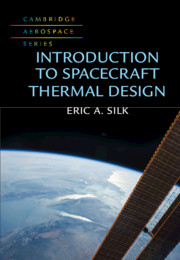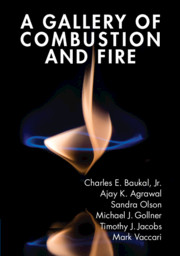Refine search
Actions for selected content:
5471 results in Thermal-fluids engineering
Appendix B - Thermal Coatings Tables
-
- Book:
- Introduction to Spacecraft Thermal Design
- Published online:
- 19 June 2020
- Print publication:
- 09 July 2020, pp 345-351
-
- Chapter
- Export citation
6 - Sensors, Instrumentation and Test Support Hardware
-
- Book:
- Introduction to Spacecraft Thermal Design
- Published online:
- 19 June 2020
- Print publication:
- 09 July 2020, pp 263-283
-
- Chapter
- Export citation
4 - The Space Environment
-
- Book:
- Introduction to Spacecraft Thermal Design
- Published online:
- 19 June 2020
- Print publication:
- 09 July 2020, pp 114-164
-
- Chapter
- Export citation
Figures
-
- Book:
- Introduction to Spacecraft Thermal Design
- Published online:
- 19 June 2020
- Print publication:
- 09 July 2020, pp xi-xviii
-
- Chapter
- Export citation
7 - Fundamentals of Cryogenics
-
- Book:
- Introduction to Spacecraft Thermal Design
- Published online:
- 19 June 2020
- Print publication:
- 09 July 2020, pp 284-332
-
- Chapter
- Export citation
Solutions
-
- Book:
- Introduction to Spacecraft Thermal Design
- Published online:
- 19 June 2020
- Print publication:
- 09 July 2020, pp 361-558
-
- Chapter
- Export citation
1 - Introduction
-
- Book:
- Introduction to Spacecraft Thermal Design
- Published online:
- 19 June 2020
- Print publication:
- 09 July 2020, pp 1-12
-
- Chapter
- Export citation
5 - Space-Based Advanced Thermal Conductance and Storage Technologies
-
- Book:
- Introduction to Spacecraft Thermal Design
- Published online:
- 19 June 2020
- Print publication:
- 09 July 2020, pp 165-262
-
- Chapter
- Export citation
Contents
-
- Book:
- Introduction to Spacecraft Thermal Design
- Published online:
- 19 June 2020
- Print publication:
- 09 July 2020, pp ix-x
-
- Chapter
- Export citation
3 - Radiative Heat Transfer Analysis
-
- Book:
- Introduction to Spacecraft Thermal Design
- Published online:
- 19 June 2020
- Print publication:
- 09 July 2020, pp 64-113
-
- Chapter
- Export citation
Subscripts
-
- Book:
- Introduction to Spacecraft Thermal Design
- Published online:
- 19 June 2020
- Print publication:
- 09 July 2020, pp xxvi-xxviii
-
- Chapter
- Export citation
Tables
-
- Book:
- Introduction to Spacecraft Thermal Design
- Published online:
- 19 June 2020
- Print publication:
- 09 July 2020, pp xix-xx
-
- Chapter
- Export citation
Appendix C - Earth IR and Albedo tables
-
- Book:
- Introduction to Spacecraft Thermal Design
- Published online:
- 19 June 2020
- Print publication:
- 09 July 2020, pp 352-354
-
- Chapter
- Export citation
2 - Conduction Heat Transfer Analysis
-
- Book:
- Introduction to Spacecraft Thermal Design
- Published online:
- 19 June 2020
- Print publication:
- 09 July 2020, pp 13-63
-
- Chapter
- Export citation
Copyright page
-
- Book:
- Introduction to Spacecraft Thermal Design
- Published online:
- 19 June 2020
- Print publication:
- 09 July 2020, pp vi-vi
-
- Chapter
- Export citation
8 - Developmental and Environmental Testing
-
- Book:
- Introduction to Spacecraft Thermal Design
- Published online:
- 19 June 2020
- Print publication:
- 09 July 2020, pp 333-340
-
- Chapter
- Export citation
Appendix A - Common View Factor Tables
-
- Book:
- Introduction to Spacecraft Thermal Design
- Published online:
- 19 June 2020
- Print publication:
- 09 July 2020, pp 341-344
-
- Chapter
- Export citation

Introduction to Spacecraft Thermal Design
-
- Published online:
- 19 June 2020
- Print publication:
- 09 July 2020

A Gallery of Combustion and Fire
-
- Published online:
- 17 June 2020
- Print publication:
- 03 September 2020
Chapter Two - Mathematical Description of Oscillations
-
- Book:
- Ocean Waves and Oscillating Systems
- Published online:
- 12 May 2020
- Print publication:
- 28 May 2020, pp 6-45
-
- Chapter
- Export citation
